Every once in a while archaeologists (and sometimes regular Joes) make some remarkable discoveries. Stunned, they are often unable to explain what it is they’ve found, how it came into existence, or ascertain its value. This is a comprehensive list of such artifacts; artifacts that many believe should have never existed given the discerned age/period of their creation.
THE LONDON HAMMER – A TOOL OLDER THAN HISTORY
In June 1936 (or 1934 according to some accounts), Max Hahn and his wife Emma were on a walk when they noticed a rock with wood protruding from its core. They decided to take the oddity home and later cracked it open with a hammer and a chisel. Ironically, what they found within seemed to be an archaic hammer of sorts. A team of archaeologists checked it, and as it turns out, the rock encasing the hammer was dated back more than 400 million year; the hammer itself turned out to be more than 500 million years old. Additionally, a section of the handle has begun the transformation to coal. Creationists, of course, were all over this. The hammer’s head, made of more than 96% iron, is far more pure than anything nature could have achieved without an assist from modern technology.
Pictures from here, copyright David Lines
THE ANTIKYTHERA MECHANISM – A GREEK ANCIENT COMPUTER
 The Antikythera mechanism has been labeled the first known mechanical computer. Found in a shipwreck off the Greek island of Antikythera, it was designed to calculate astronomical positions. Consisting of a box with
The Antikythera mechanism has been labeled the first known mechanical computer. Found in a shipwreck off the Greek island of Antikythera, it was designed to calculate astronomical positions. Consisting of a box with  dials on the outside and a very complex assembly of gear wheels mounted within, it’s about as complex as an 18th century top-notch clock. The level of sophistication utilized by the device has forced scientists to accept that their perceptions of ancient Greek engineering may be faulty. Nothing similar to this exists or is mentioned in any known writings from the period of its creation. Based on the knowledge we do have, this mechanism shouldn’t even exist. According to Professor Michael Edmunds of Cardiff University, who led the team studying the mechanism:
dials on the outside and a very complex assembly of gear wheels mounted within, it’s about as complex as an 18th century top-notch clock. The level of sophistication utilized by the device has forced scientists to accept that their perceptions of ancient Greek engineering may be faulty. Nothing similar to this exists or is mentioned in any known writings from the period of its creation. Based on the knowledge we do have, this mechanism shouldn’t even exist. According to Professor Michael Edmunds of Cardiff University, who led the team studying the mechanism:
“This device is just extraordinary, the only thing of its kind. The design is beautiful, the astronomy is exactly right. The way the mechanics are designed just makes your jaw drop. Whoever has done this has done it extremely carefully.” He added: “…in terms of historic and scarcity value, I have to regard this mechanism as being more valuable than the Mona Lisa.”
THE DROPA STONES

 In 1938, an expedition led by archaeologist Dr. Chi Pu Tei into the Baian-Kara-Ula in China made an astonishing discovery. Nearby caves held traces of the ancient culture which once occupied them. Buried by the dusts of time, hundreds of stone disks lay scattered about the cave’s interior. Nothing too spectacular you may think, but the disks turned out to be eerily similar to phonograph records — nine inches in diameter, a circle cut into their centers and an obvious spiral groove. They are believed to be more than 10,000 years old. But the spiral, as it turns out, is composed of tiny hieroglyphics. When studied and translated, it was revealed that the discs tell the amazing story of spaceships that crashed into the mountains, piloted by people who called themselves the Dropa.
In 1938, an expedition led by archaeologist Dr. Chi Pu Tei into the Baian-Kara-Ula in China made an astonishing discovery. Nearby caves held traces of the ancient culture which once occupied them. Buried by the dusts of time, hundreds of stone disks lay scattered about the cave’s interior. Nothing too spectacular you may think, but the disks turned out to be eerily similar to phonograph records — nine inches in diameter, a circle cut into their centers and an obvious spiral groove. They are believed to be more than 10,000 years old. But the spiral, as it turns out, is composed of tiny hieroglyphics. When studied and translated, it was revealed that the discs tell the amazing story of spaceships that crashed into the mountains, piloted by people who called themselves the Dropa.
THE SAQQARA BIRD – AN EGYPTIAN PLANE
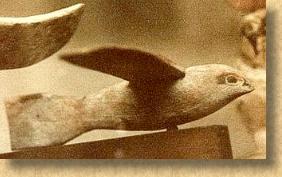 Discovered during the 1898 excavation of the Pa-di-Imen tomb in Saqqara, Egypt, the Saqqara bird is (as you could have guessed) a bird shaped artifact made from the wood of a sycamore tree. Weighing in at just under 40 grams and with a wingspan of more than 7 inches, it’s been dated back to approximately 200 BC. Lack of documentation and other data has led to some speculation. In fact, the ancient egyptians were well aware of the principles of aviation. Was it simply the toy of an affluent Egyptian child? Did it serve some kind of ceremonial purpose? Regardless, the object has few realistic bird traits. With its vertical tail, resembling that of an airplane or glider, it resembles no known bird. Scientists came to the conclusion that it couldn’t be effective as an aircraft due to lack of technology, but it could have in fact been a glider.
Discovered during the 1898 excavation of the Pa-di-Imen tomb in Saqqara, Egypt, the Saqqara bird is (as you could have guessed) a bird shaped artifact made from the wood of a sycamore tree. Weighing in at just under 40 grams and with a wingspan of more than 7 inches, it’s been dated back to approximately 200 BC. Lack of documentation and other data has led to some speculation. In fact, the ancient egyptians were well aware of the principles of aviation. Was it simply the toy of an affluent Egyptian child? Did it serve some kind of ceremonial purpose? Regardless, the object has few realistic bird traits. With its vertical tail, resembling that of an airplane or glider, it resembles no known bird. Scientists came to the conclusion that it couldn’t be effective as an aircraft due to lack of technology, but it could have in fact been a glider.
THE BAGHDAD BATTERY – A 2000 YEAR OLD BATTERY
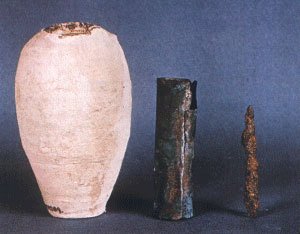 This device consists of a 5-1/2-inch high clay vessel, inside of which was a copper cylinder held in place by asphalt. Within the cylinder, archaeologists found an oxidized iron rod. In 1940, Wilhelm König (the German director of the National Museum of Iraq) suggested that these could be galvanic cells, perhaps used for electroplating gold onto silver objects. Nobody has been able to prove him wrong, especially since it only needed to be filled with an acid or alkaline substance to produce an electric charge.
This device consists of a 5-1/2-inch high clay vessel, inside of which was a copper cylinder held in place by asphalt. Within the cylinder, archaeologists found an oxidized iron rod. In 1940, Wilhelm König (the German director of the National Museum of Iraq) suggested that these could be galvanic cells, perhaps used for electroplating gold onto silver objects. Nobody has been able to prove him wrong, especially since it only needed to be filled with an acid or alkaline substance to produce an electric charge.
UNEXPLAINABLE FOSSILS AND METAL OBJECTS
Geology is a relatively “new” science. The progress and developments made through experimentation are absolutely remarkable and have helped in many other fields. Still, there are some things yet to be explained. Though the honeycomb pattern of paleodictyon is already well known, we remain stumped as to the creation of such and more questions are being raised.
For example, a fossil of a human handprint was found in limestone estimated to be more than 110 million years, a fossilized human finger with just as much, and the aparent discovery of a human footprint that possibly sported a sandal which dates to more than 300 million years ago. These amazing fossilized imprints/remains have left the scientific community scratching their collective heads. Not to mention the 65 million year old semi-ovoid metallic tubes being dug out of France, the unusual block of coal discovered 124 years ago which contained a metal cube that couldn’t have formed naturally within the lump, and many more such things
THE PIRI REIS MAP
 In 1929, a group of historians made what can only be described as an amazing discovery, written on the skin of a gazelle. After study and research, they found that it is a genuine map drawn in 1513 by Piri Reis, a well documented admiral of the Turkish navy. He depicts Europe and North Africa, the coast of Brazil, several islands (Azores, Canary Islands, and the mythical island of Antilia), and even Antarctica, which was thought to be discovered more than 300 years later. The most puzzling thing is not that it shows we need to rethink the chronology for a number of exploratory discoveries, but that it describes Antarctica’s topography as not being masked by ice and in great detail. The last time that occured was more than 6000 years ago. Tell me then. How did a Turkish admiral from half a millenium ago map a continent that’s been covered by ice for the last 6000 years?
In 1929, a group of historians made what can only be described as an amazing discovery, written on the skin of a gazelle. After study and research, they found that it is a genuine map drawn in 1513 by Piri Reis, a well documented admiral of the Turkish navy. He depicts Europe and North Africa, the coast of Brazil, several islands (Azores, Canary Islands, and the mythical island of Antilia), and even Antarctica, which was thought to be discovered more than 300 years later. The most puzzling thing is not that it shows we need to rethink the chronology for a number of exploratory discoveries, but that it describes Antarctica’s topography as not being masked by ice and in great detail. The last time that occured was more than 6000 years ago. Tell me then. How did a Turkish admiral from half a millenium ago map a continent that’s been covered by ice for the last 6000 years?
THE NAZCA DRAWINGS
 The Nazca drawings (or lines) definitely have something otherworldly about them. Discovered in 1930 — when the US inaugurated two new commercial lines — they cover 450 square km and some measure more than 200m in length. They depict lines, geometrical figures, animals and figures that we haven’t entirely figured out yet (many believe them to be constellations). Whether made for the gods or for some other reason, it’s obvious that they were meant to be seen from the sky. Scientists have had trouble trying to figure out how they could have been designed and created without somebody directing the work from above. We can only marvel at these amazing figures and continue to wonder how and why they were created by a people called the Nasca.
The Nazca drawings (or lines) definitely have something otherworldly about them. Discovered in 1930 — when the US inaugurated two new commercial lines — they cover 450 square km and some measure more than 200m in length. They depict lines, geometrical figures, animals and figures that we haven’t entirely figured out yet (many believe them to be constellations). Whether made for the gods or for some other reason, it’s obvious that they were meant to be seen from the sky. Scientists have had trouble trying to figure out how they could have been designed and created without somebody directing the work from above. We can only marvel at these amazing figures and continue to wonder how and why they were created by a people called the Nasca.
THE MYSTERIOUS CITY OF NAN MADOL – A CITY BUILT ON CORALS
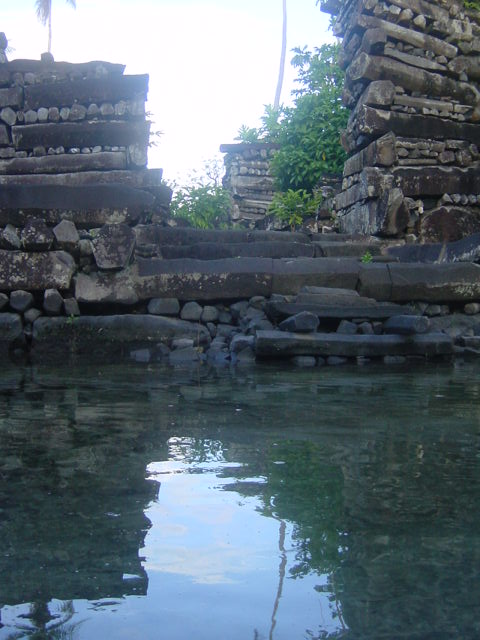 The city of Nan Madol was built between 200 B.C. – 800 A.D., on a coral reef near Micronesia. It consisted of about 100 artificial islands made from huge basalt blocks and connected with viaducts. From the start, it dazzles us with a mix of the bizarre and grandeur. From the start it seems incongruous; 250 million tons of offshore basalt in the middle of nowhere. How were these huge blocks quarried, transported, and placed in the perfect spot? Even by today’s standards, it would an impressive engineering feat. Additionally, the reasoning behind its development remains a mystery. Archaelogists have few clues as to what happened to the civilization responsibile for its creation.
The city of Nan Madol was built between 200 B.C. – 800 A.D., on a coral reef near Micronesia. It consisted of about 100 artificial islands made from huge basalt blocks and connected with viaducts. From the start, it dazzles us with a mix of the bizarre and grandeur. From the start it seems incongruous; 250 million tons of offshore basalt in the middle of nowhere. How were these huge blocks quarried, transported, and placed in the perfect spot? Even by today’s standards, it would an impressive engineering feat. Additionally, the reasoning behind its development remains a mystery. Archaelogists have few clues as to what happened to the civilization responsibile for its creation.
THE SACSAYHUAMAN WALLS
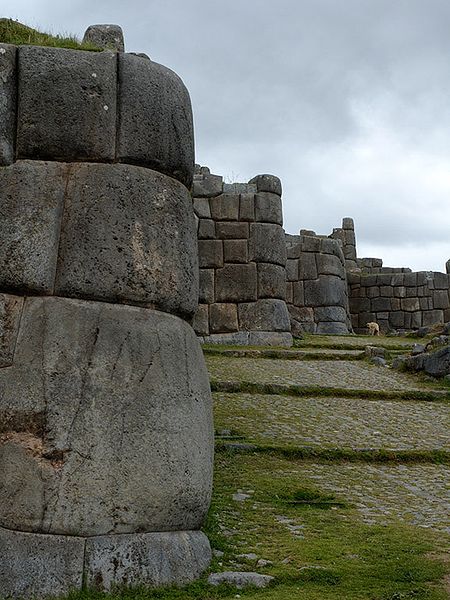 Near the city of Cuzco, more than 3500 meters above sea level, these amazing walls first fascinated the Spanish conquistadores. They were astonished to discover how these people who, according to them, were ignorant and lacked the ability of logical reasoning
Near the city of Cuzco, more than 3500 meters above sea level, these amazing walls first fascinated the Spanish conquistadores. They were astonished to discover how these people who, according to them, were ignorant and lacked the ability of logical reasoning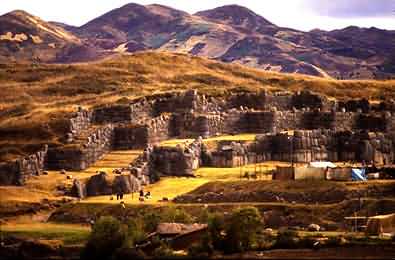 required to have built such wonders. They are in fact 3 concentric walls, the average being roughly 360 meters in length and 6 meters in height, made from limestone blocks that weigh about 300 tons each. They didn’t use mortar or any other kind of cement to bind the walls, but they are carved and placed in such a way packed so closely that even a sharp knife can’t be wedged between 2 blocks. Scientists have tried to achieve this at a much smaller scale and have failed in their efforts to replicate the tight joints of the Sacsayhuaman walls.
required to have built such wonders. They are in fact 3 concentric walls, the average being roughly 360 meters in length and 6 meters in height, made from limestone blocks that weigh about 300 tons each. They didn’t use mortar or any other kind of cement to bind the walls, but they are carved and placed in such a way packed so closely that even a sharp knife can’t be wedged between 2 blocks. Scientists have tried to achieve this at a much smaller scale and have failed in their efforts to replicate the tight joints of the Sacsayhuaman walls.
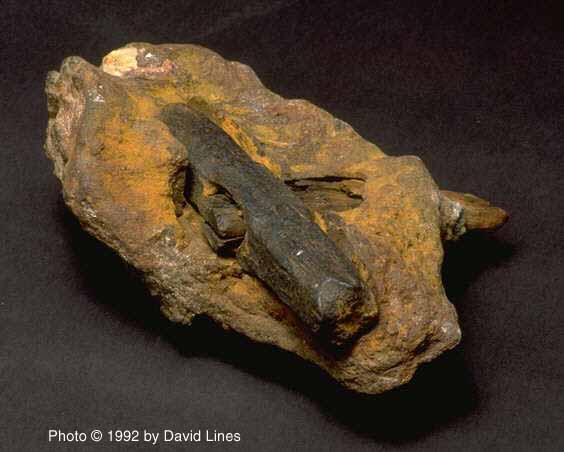

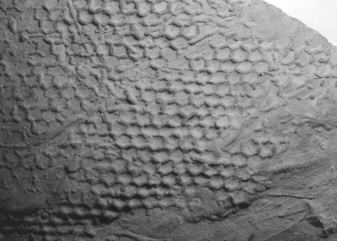
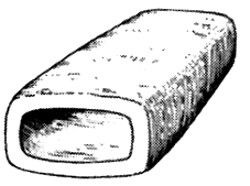
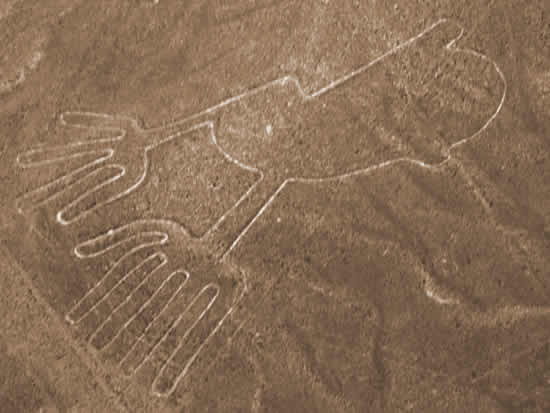

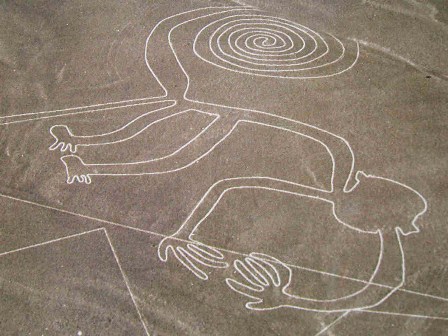


No comments:
Post a Comment